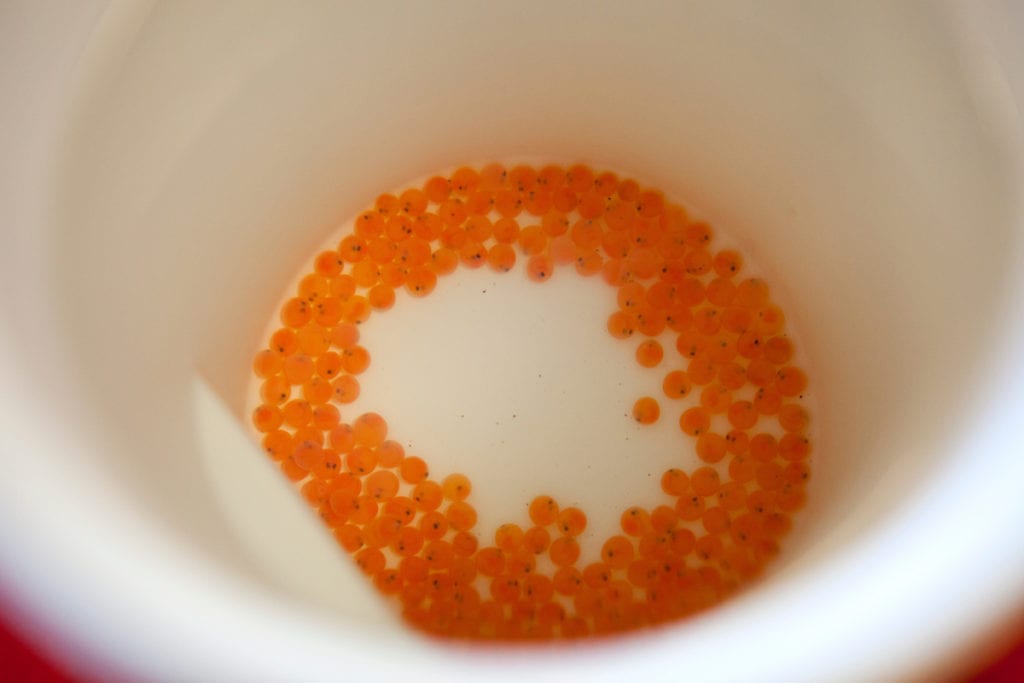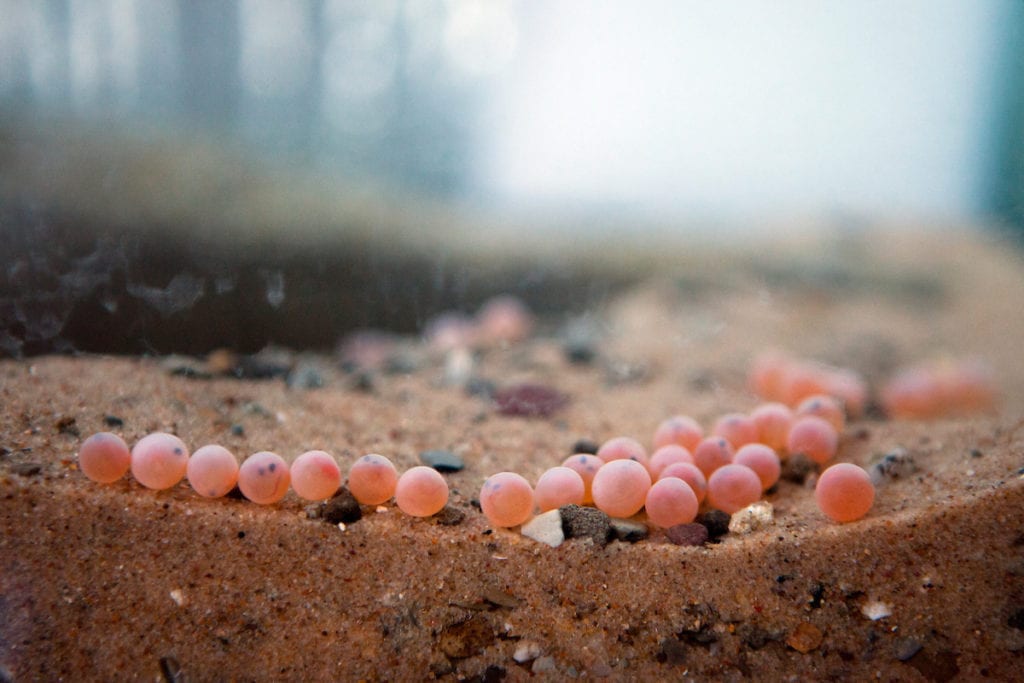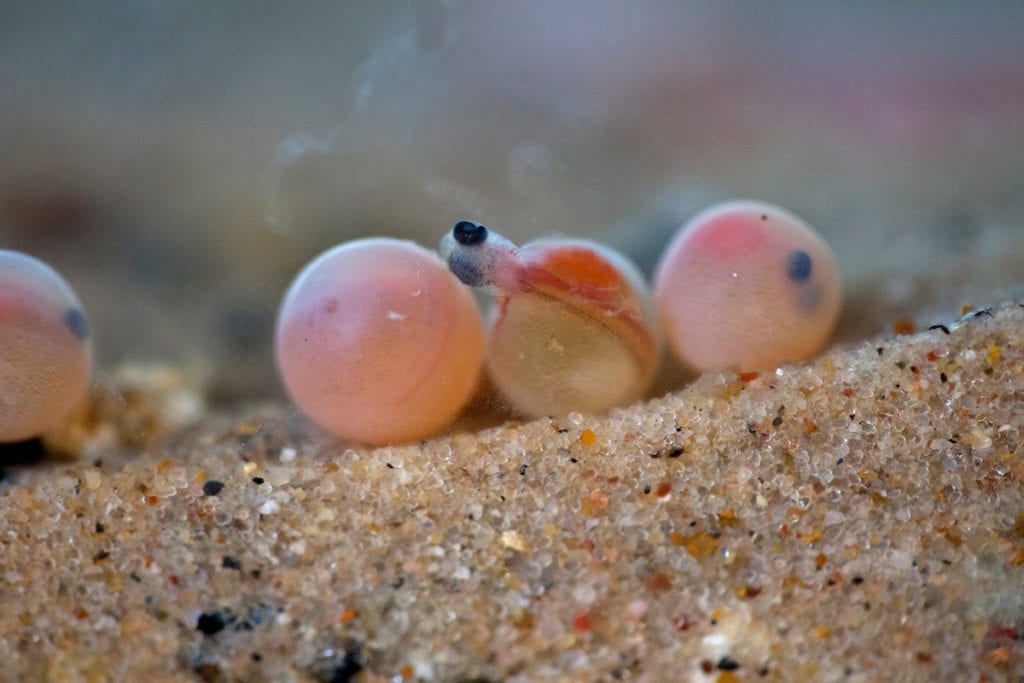
Maine currently has the last remaining wild population of Atlantic Salmon in the U.S. Once native to almost every river north of the Hudson River in New York, remnant wild populations are now found in only 11 rivers, all in Maine.
As diadromous fish, Atlantic Salmon spend the first three years or so of their lives in freshwater streams and rivers, then migrate out to the ocean where they’ll spend another two to three years before returning to their natal stream to spawn. Such a complex life cycle, in two distinctly different habitat types and lived over many hundreds of miles of river stream and ocean, exposes Atlantic salmon to a myriad of threats. Issues such as habitat loss and degradation, pollution, disease, invasive species, habitat fragmentation from dams and culverts, and overfishing have all contributed to the near demise of this species on the eastern seaboard.
Because of the dramatic decline in this iconic species, it is currently listed as ‘Endangered’ under the Endangered Species Act — but efforts are underway to reverse this negative trend. Maine Audubon and a number of schools in Maine and Canada are doing their part by participating in Fish Friends.
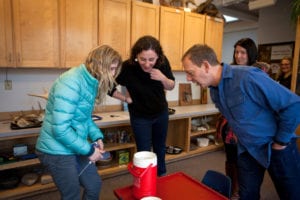
Fish Friends is an educational rearing program overseen by the Atlantic Salmon Federation (ASF) in cooperation with the region’s federal fish hatcheries and agencies. Designed primarily for classrooms, this year the Discovery Room at Gilsland Farm is also hosting the program as the only public location!
Fish Friends is an educational program in which schools–and Maine Audubon–receive Atlantic Salmon eggs from local hatcheries in January and raise them until they are ready to be released into the wild in the spring (usually sometime in May). Throughout that time, participants are responsible for keeping the tank and water clean and maintaining the proper water temperature in order to mimic natural stream temperatures.
After several weeks in the tank, the salmon eggs hatch into alevins–newly hatched salmon, still attached to the egg sac. Protected in the gravel bottom of the stream (or the tank, in our case), the egg sac will feed the alevin for about a month. Once the egg sac is fully absorbed, the young salmon are then referred to as fry and are able to swim on their own.
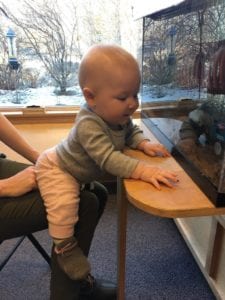
From egg arrival to release, the hatchery staff track the natural temperatures of the streams where the fry will go, so Fish Friends participants can maintain the tanks at the same temperatures. That way, when the fish are released, they are used to the temperature they will find in the stream and they are at the right developmental stage.
When they are ready to be released, Fish Friends participants will transport the young salmon fry to their home river and release them, with the help of hatchery staff or other specialists. Our Discovery Room salmon are genetically linked to the Presumpscot River, where their ancestors once swam freely, and will be released in a very specific spot upstream from Gilsland Farm. Hopefully, some of them will survive for a few years in that freshwater habitat, and then head downstream towards the ocean. Like puffins, these salmon will go out to sea as adults and, with luck, return to where they came from to lay their own eggs.
Atlantic salmon are great examples of how Maine wildlife connects us across international borders, as well as across watershed areas within our state. Marine fish throughout the Atlantic and beyond depend on Maine’s waterways to breed and rear their young. Salmon, sea lampreys, alewives, and eels all depend on Maine’s waterways and the forests that protect them in this way.
Fish Friends is not a fish stocking program — it is an educational program. Our goals for hosting this project are focused on learning about life cycles, highlighting Maine’s international habitat value, increasing awareness for Maine’s value for Atlantic Salmon in the U.S., and encouraging participation in expert-led community projects.
Many of the eggs have already hatched, and we continue to watch the rest closely. All are welcome to visit the Discovery Room, to come check out the eggs that remain, and to watch the growth of the alevin as they develop into fry. We will continue to post updates as the fish mature and when they are released.
